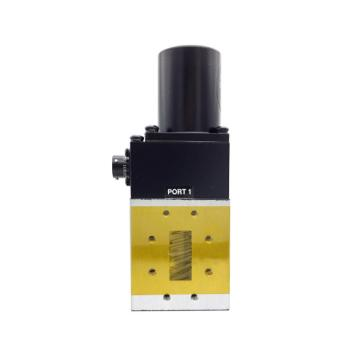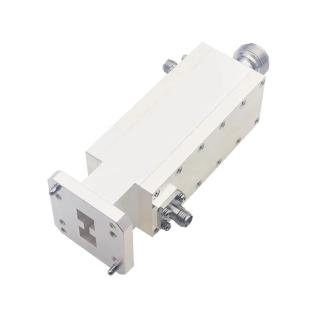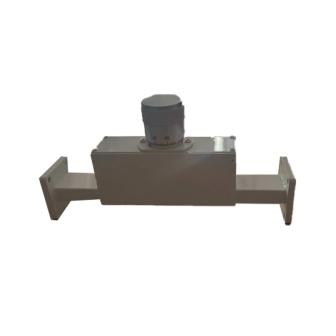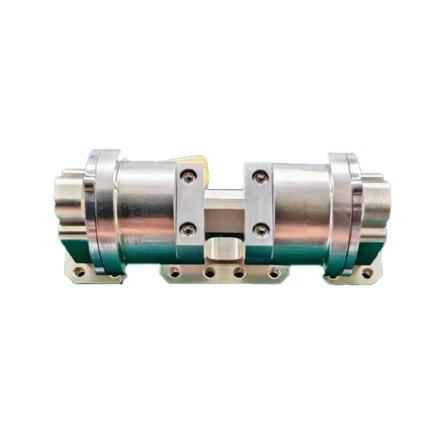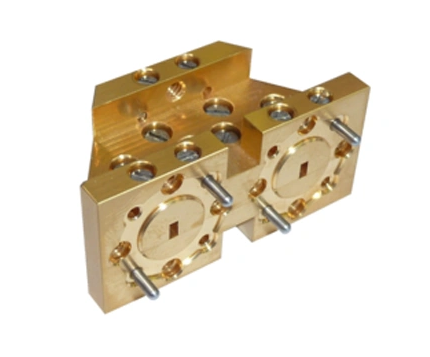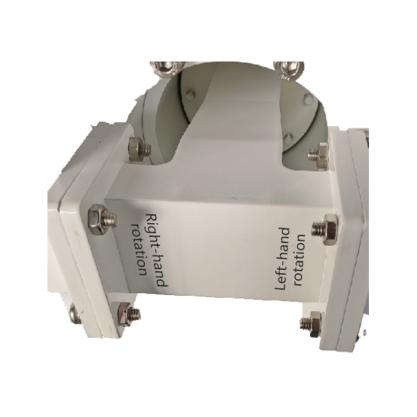Microwave passive components, as crucial components in microwave communication systems, undertake critical functions such as signal transmission, power combining and distribution, and signal switching and conversion. Their performance directly impacts system stability, transmission efficiency, and reliability. This article explores the technical characteristics and application scenarios of typical components, including waveguide switches, couplers, phase shifters, coaxial converters, rotary joints, power dividers/combiners, duplexers, circular polarizers, and straight waveguides, to provide a reference for engineering design.I. Waveguide Switches: Balancing Flexibility and IsolationWaveguide switches achieve multi-port switching by controlling signal paths. Common switching modes include manual and motorized switching, and they support two- or three-channel rotor configurations. Their core advantage lies in their efficient choke design. By optimizing electromagnetic field distribution, they increase RF isolation between uncoupled ports to over 60dB, effectively suppressing signal crosstalk. Furthermore, the precision rotor indexing mechanism utilizes high-rigidity materials and micron-level machining processes to ensure channel alignment repeatability within 0.01°, meeting the requirements of long-term signal switching. Typical applications include radar system mode switching and multi-port calibration of test equipment.II. Waveguide Coupler: Precision Control of Four-Port NetworksA waveguide directional coupler is a four-port device that achieves power distribution and monitoring through a coupling hole between a primary and secondary waveguide. Its design must balance coupling flatness (±0.5dB) and directivity (>30dB). Key technologies include:1. Multi-section coupling structure: Using a stepped impedance transformer to balance the frequency response;
2. Metal diaphragm loading: Suppressing high-order mode resonances and extending the operating bandwidth to 2-18GHz;
3. Low-loss substrate: Using copper or aluminum substrates with gold or silver plating effectively reduces the main waveguide loss (<0.1dB). In satellite communications, waveguide couplers are commonly used for uplink power monitoring and load access status monitoring.
III. Waveguide Phase Shifters: The Core Component for Phase Control
Waveguide phase shifters achieve continuous phase adjustment from 0° to 360° by varying the equivalent electrical length of the transmission line. They are categorized as fixed and adjustable:Fixed phase shifters utilize dielectric plates or corrugated structures and are suitable for phase compensation in specific frequency bands.Adjustable phase shifters utilize electronic or mechanical control, such as piezoelectric ceramic-driven diaphragm displacement, and offer a phase resolution of 0.1°.In phased array radars, phase shifters are integrated with T/R components to achieve rapid beam scanning (<1μs). The frequency range covered has been expanded to the W-band (75-110 GHz).
IV. Waveguide-to-Coaxial Converter: A Bridge for Cross-Domain ConnectionsThe waveguide-to-coaxial converter achieves modal conversion between waveguide (TE10 mode) and coaxial line (TEM mode). Technical highlights include:Ultra-wideband design: Through a stepped impedance transformer and optimized probe, it covers the entire waveguide frequency band, with a voltage standing wave ratio (VSWR) of <1.25;Low-loss structure: Using an air dielectric and gold-plated contact surfaces, it effectively reduces insertion loss to ≤0.2dB;In 5G millimeter-wave testing, this device seamlessly connects vector network analyzers and waveguide loads, improving measurement accuracy.
V. Rotary Joints: Stable Connections for Dynamic Systems
Rotary joints solve the connection challenges between fixed and rotating components in communication feeder systems. Their technological breakthroughs include:Multi-channel integration: Supports parallel transmission from one to 16 channels, covering frequencies from 2.6 to 80 GHz;Low-friction design: Utilizes ceramic bearings and seals for a lifespan exceeding 1 billion revolutions;Low-loss transmission: Optimized contact spring pressure improves the flatness and smoothness of the signal transmission surface, achieving an insertion loss (IL) of <0.2 dB.In radar antenna pedestals, rotary joints can carry high-power (>1 kW) signals.
VI. Power Dividers/Combiners: Balanced Management of Multi-Path SignalsWaveguide power dividers utilize T-type or Wilkinson structures to achieve power distribution between 2 and 256 channels. Key parameters are as follows:Amplitude uniformity: ±0.2 dB (2-40 GHz);Phase balance: ±2° (8 channels);Power handling: Peak power up to 10 MW (X-band).In satellite payloads, power splitters are used in multi-beam antenna feed networks, while combiners enable uplink power summing, improving system sensitivity.VII. Waveguide Duplexer: The Guardian of Transmitter-Receiver IsolationThe duplexer uses a band-stop filter (WDIP) to isolate transmit and receive signals. WDIP employs combline or cavity filters, achieving isolation >80dB and insertion loss <0.35dB. In deep space communications, the duplexer can separate weak receive signals (<-140dBm) from strong transmit signals (+50dBm), preventing the transmit link from affecting the receive link.VIII. Waveguide Circular Polarizer: A Powerful Tool for Polarization ControlA circular polarizer converts linearly polarized waves into circularly polarized waves using a quarter-wave plate or helical structure. Technical specifications include:Axial ratio: <1.1 (within a 3dB bandwidth); Insertion loss: <0.2dB; Operating bandwidth: Covering the L to Ka bands.In satellite navigation, circular polarizers can suppress multipath effects and improve positioning accuracy to the centimeter level. In satellite communication systems, circular polarizers are often used to achieve signal polarization isolation, effectively improving spectrum utilization.IX. Straight Waveguides: A Combination of Standardization and CustomizationStraight waveguides offer full frequency coverage from WR3 (220 GHz - 325 GHz) to WR1150 (0.63 GHz - 0.96 GHz), supporting customization by length (accuracy ±0.05 mm) and flange type (UG series/CPC series). In terahertz imaging systems, straight waveguides require single-crystal silicon or gold plating to reduce surface roughness (Ra < 0.1 μm) and transmission loss.While 6G networks reshape the digital world at 1 terabyte per second, deep space probes capture cosmic microwave background radiation 400 million kilometers away, and quantum computers require nanosecond-level phase synchronization for entangled photons—behind these seemingly magical scenes, microwave passive components silently support the "precise transmission" of signals. They don't grab the headlines like chips, but they act like the "nerve endings" of communication systems. Within millimeter-scale waveguide cavities, billion-turn rotary joints, and the -196°C radiation environment of space, they continuously demonstrate the technological philosophy of "ultra-wideband, low loss, and high isolation."The next decade will be a "golden era" for microwave passive components. Developments in the terahertz frequency band (0.1-10 THz) will drive device sizes toward the micro- and nanoscale, and graphene metamaterials may replace traditional metals, achieving "zero-loss" transmission. Furthermore, AI-assisted design tools will overcome the challenges of multi-physics coupling, enabling duplexers to simultaneously achieve 80dB isolation and 1kW power capacity in the Ka-band. Even more exciting is the realization of an integrated air-space-ground-sea network, requiring microwave passive components to evolve beyond their current form factors and move towards flexible, wearable, and self-healing smart materials. Perhaps in the near future, our communication terminals will incorporate integrated "waveguide-coaxial-fiber" tri-mode conversion chips, enabling seamless coverage in all scenarios.In this endless technological marathon, RX SPACE is transforming from a follower to a runner-up. However, the challenges remain daunting. Only through perseverance can China's microwave passive components truly reach the top of the world. Just like the inexhaustible electromagnetic waves within a waveguide cavity, the light of technological innovation will eventually penetrate the fog and illuminate the next great sea of human communications.

